Jacopo della Quercia's Madonna in Anghiari: a sculpture...versatile.
A marvelous Renaissance wooden sculpture has been enriching the state heritage since 1977: it is the Madonna and Child by Jacopo della Quercia (Siena, c. 1374 - 1438), purchased that year by the Superintendency of Arezzo and now the most important work in the Museum of Palazzo Taglieschi, located in the center of Anghiari, in Valtiberina. It is a work deeply linked to its territory, since it came to the antiquarian market after having long been kept in the chapel of the Villa di Sterpeto, also near Anghiari, owned by the Bartolomei Corsi family, but before that probably placed in the church of the Compagnia di Santa Maria della Misericordia: it was precisely the confraternity founded in 1348 (which today also has a museum tracing its history) that commissioned the sculpture, as can be read in the original inscription placed on the base of the work and painted in Gothic capitals (“This figure a fece fare la compagnia de la Misericordia”). Confirming the ancient location are then documents: the Madonna and Child by Jacopo della Quercia is in fact mentioned in an inventory of the company dated 1526 (as “Madonna in wood with her child in relief”).
This splendid work by the great Sienese artist is in an excellent state of preservation: it has retained its original colors, which were restored to it following a restoration in the 1980s conducted by Barbara Schleicher, and it has not suffered any losses, so that today we can appreciate all the delicacy of this wooden sculpture, which presents us with a gentle, loving Madonna, caught holding the Child, who is depicted standing on the Virgin’s lap. She is depicted in her traditional attire: the blue mantle edged with gold alludes to her heavenly divinity, the red tunic to her royal dignity but also to the mystery of the incarnation and her human dimension, while the white veil is a symbol of her purity. “Close viewing of the Anghiari work,” wrote scholar Laura Speranza, “allows one to fully grasp the very high quality of the sculpture and its coloring. The sweet, pensive face of the Virgin is ennobled by the golden mass of hair framing it, while the white veil realistically depicted in the decorations bring her closer to a woman in the flesh. The refinement that characterizes the face is also found in the tapered, graceful hands and in the splendid gold chevron that adorns the edge of the sleeves and the midnight blue mantle whose reverse is decorated in yellow, with motifs taken from royal cloth.”
In 1651, as we know from a document that was found in the Historical Archives of the Compagnia della Misericordia by an inhabitant of Anghiari, Loris Babbini, someone had proposed to have a “silver crown made to hold on the head of the Madonna,” and an additional crown for the Child: we do not know if this was later acted upon, since the two figures have come down to us as we see them today, without a crown.
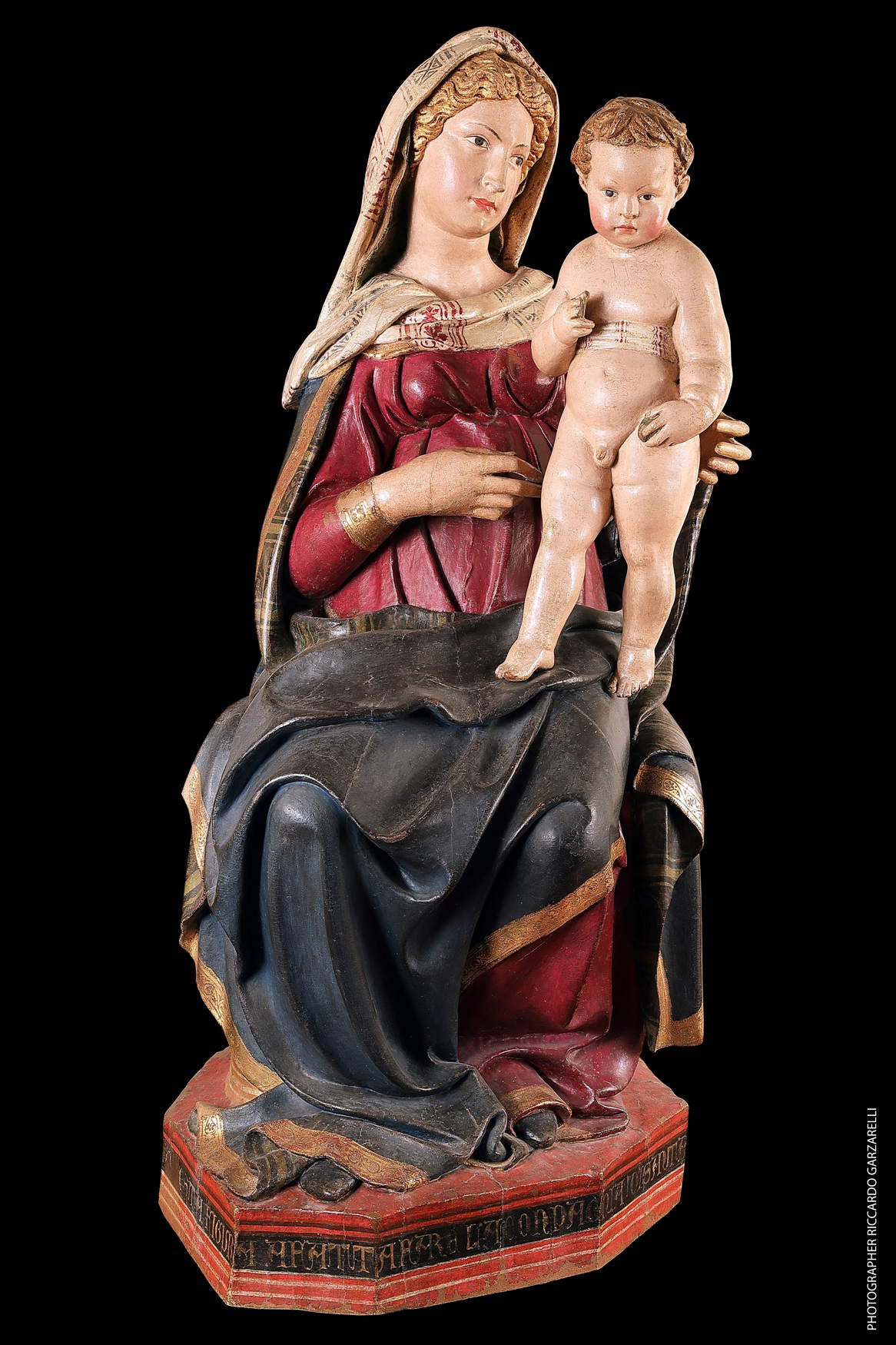
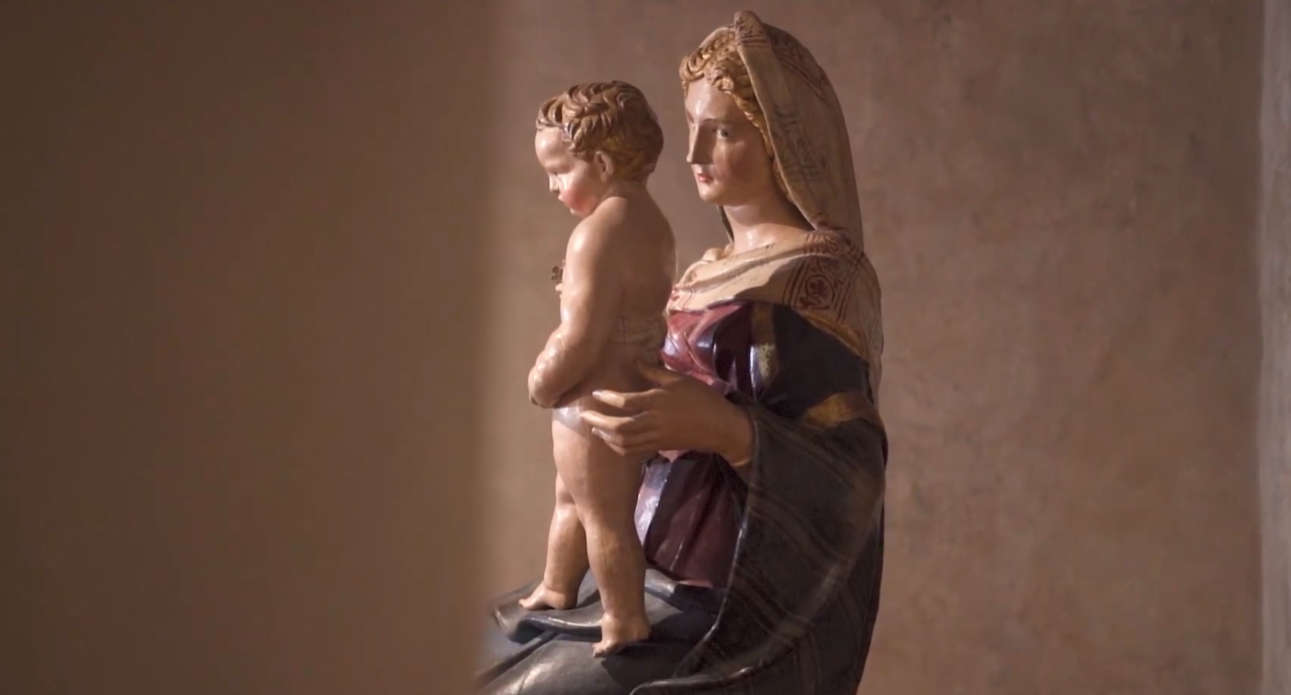
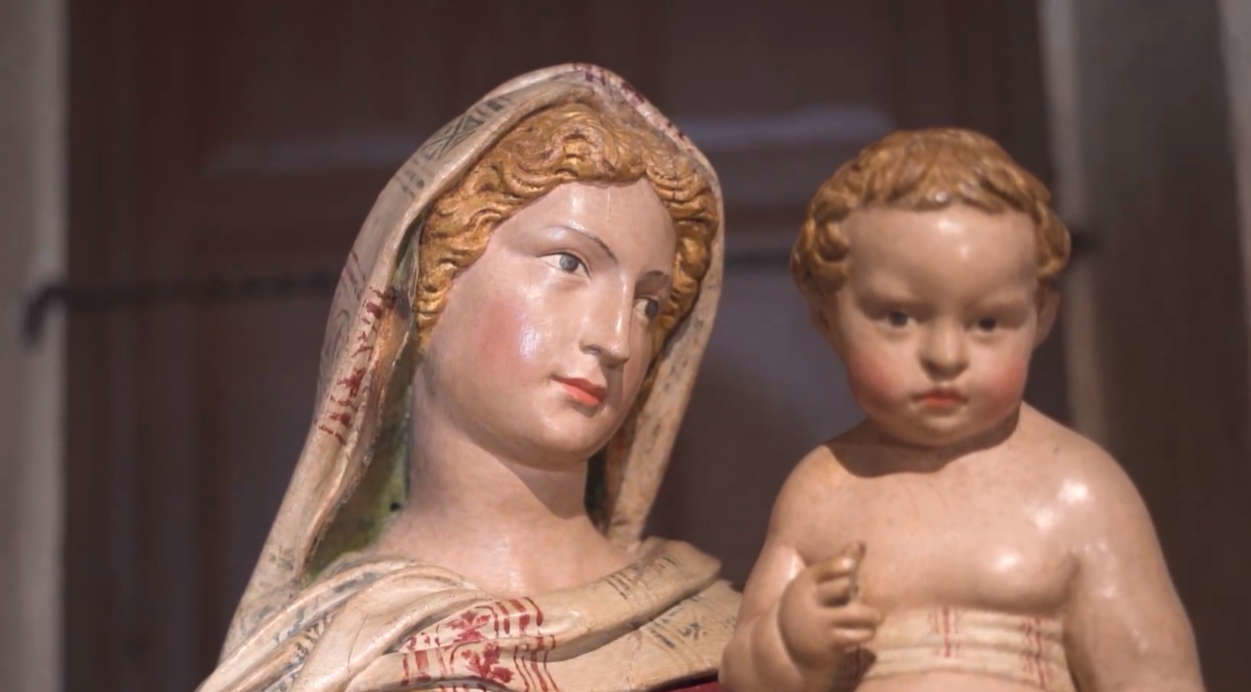
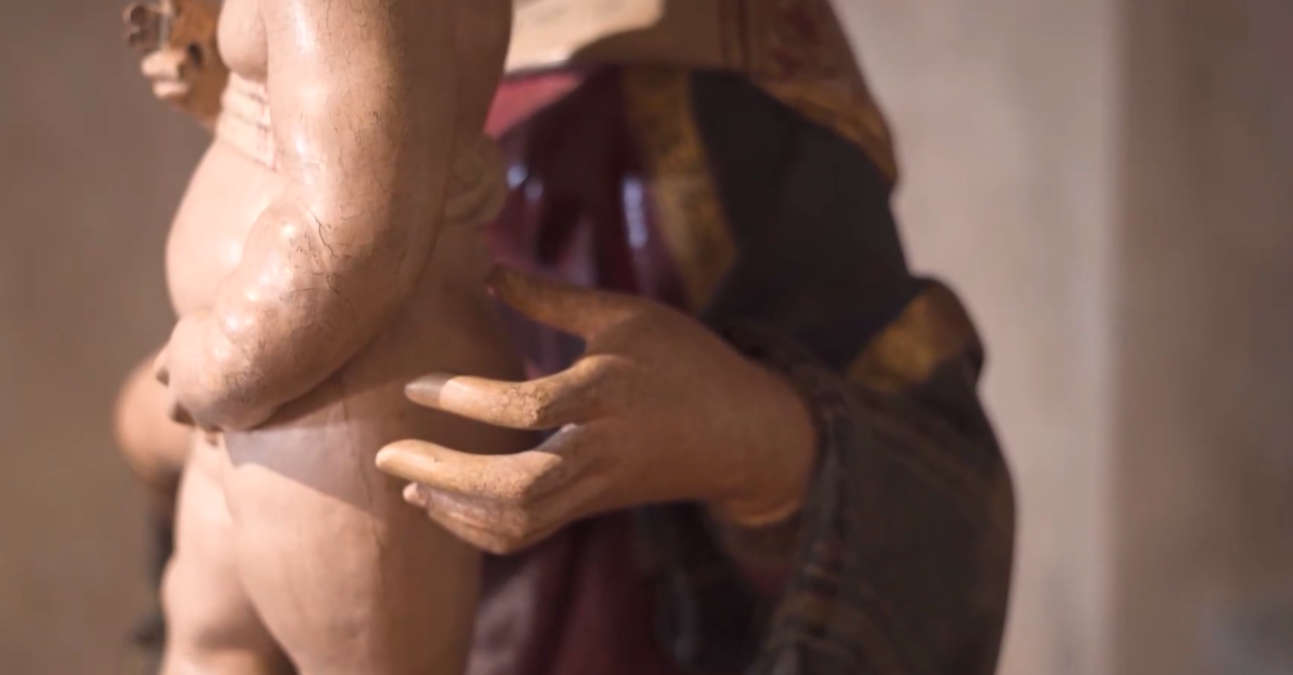
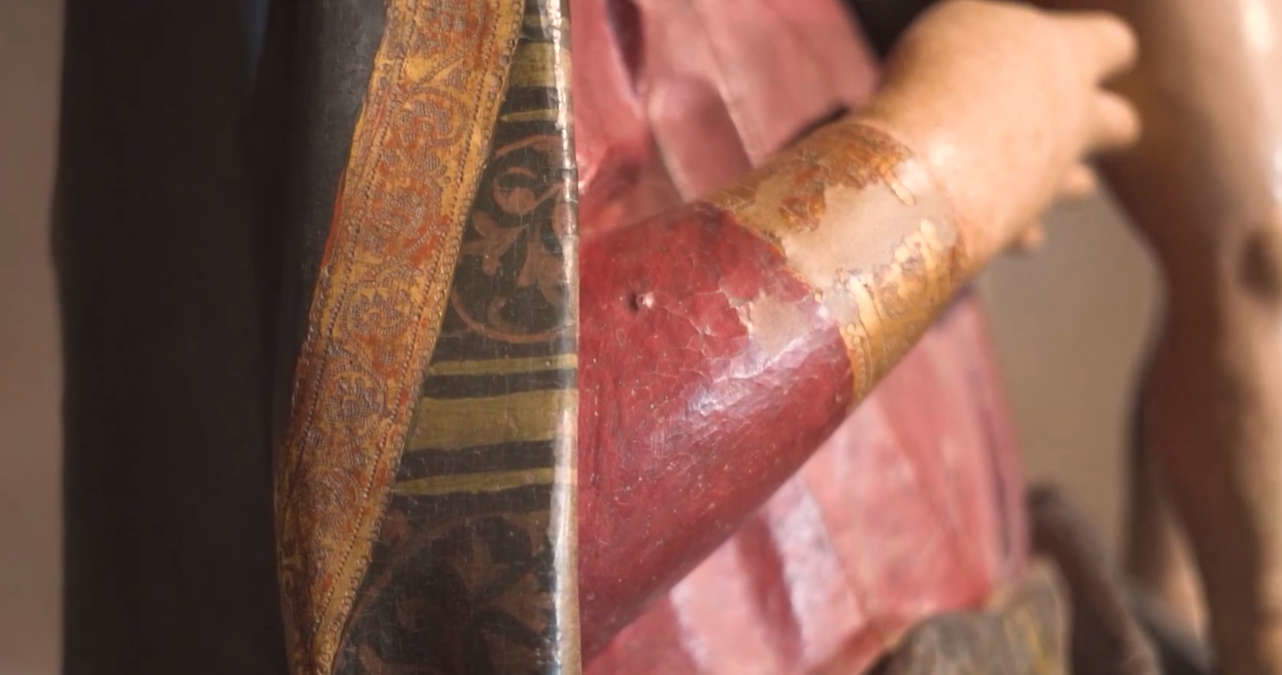
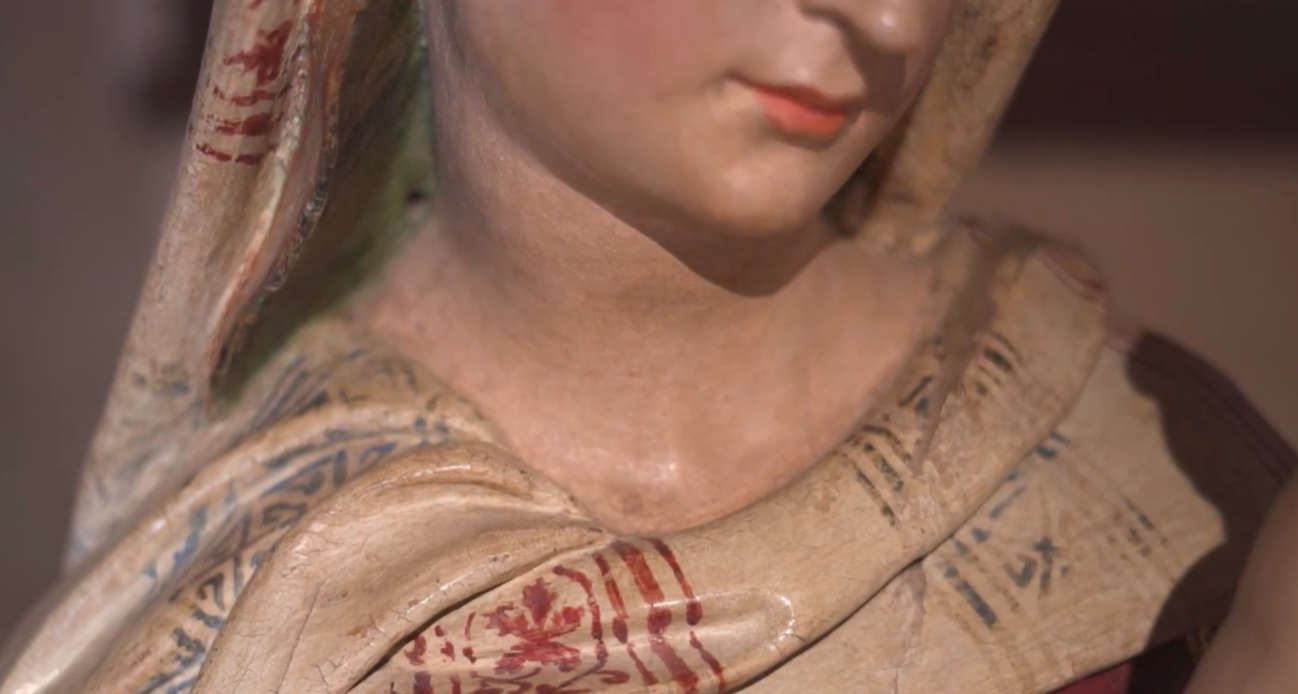
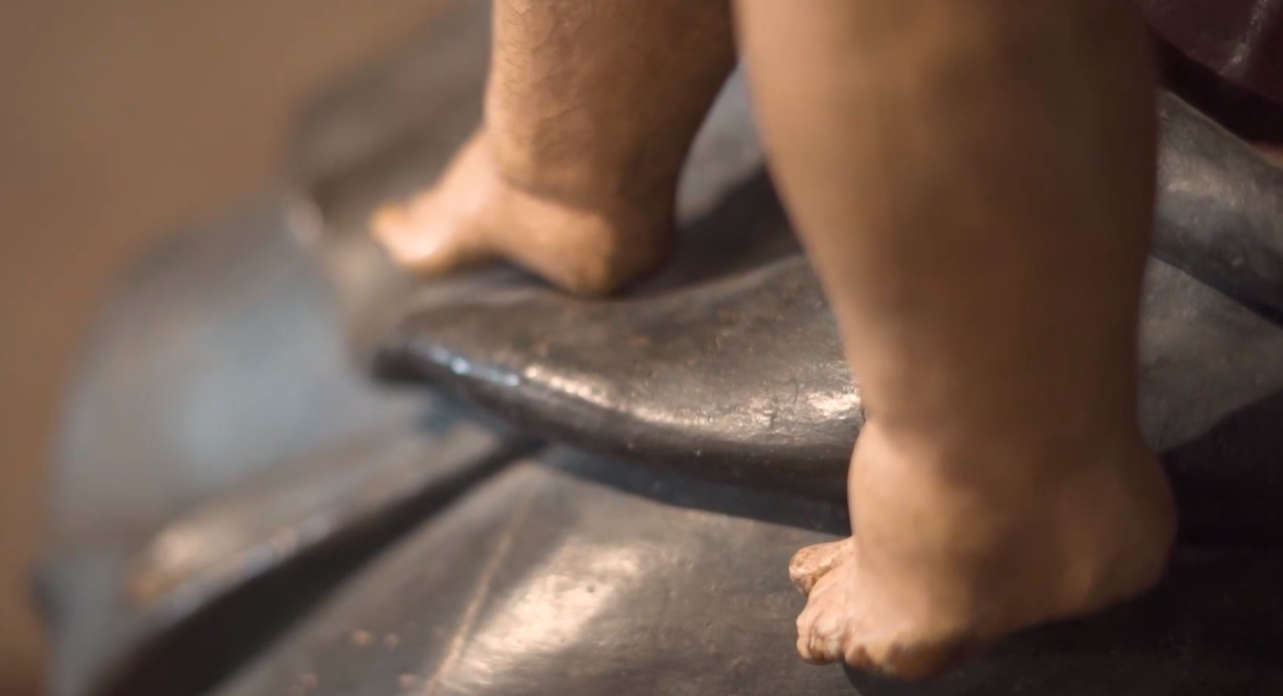
Even if we can get an idea of where it was in ancient times, we do not really know what needs this work was meant to meet, not least because, if you look at it closely, you will notice a peculiarity: the Child does indeed seem to be a self-contained figure, and if someone tried to imagine him detached from his mother, he would not have worked badly with his imagination. Partly because the Virgin and Child have long been displayed separately, and were only reunited in the early 2000s. And partly because, perhaps, the fact that the two figures could be detached may have been an element that connoted the work in the past. Jacopo della Quercia’s Madonna may in fact be understood as a Madonna del Parto, similar to the one Piero della Francesca would later paint at Monterchi, or rather a Madonna dell’Aspettazione: in fact, scholar Alessandro Parronchi has speculated that perhaps in ancient times the figure of the Child was removed on December 18, on the feast of the expectatio Partus Beatae Mariae Virginis, the feast of the expectation of the Virgin’s birth. This hypothesis could be corroborated by the Virgin’s form as well as her pose: in fact, a bulge can be seen near her belly, and even her hand seems to be caressing it, as is the case in Piero della Francesca’s painting. Therefore, it cannot be ruled out that the Child, although also executed by Jacopo della Quercia, was even intended for another use, as suggested by the aforementioned Laura Speranza, even going so far as to speculate, albeit with all due caution, that perhaps Jacopo might even have inspired Piero della Francesca.
According to art historian Anna Maria Maetzke, the Child could have been placed on a cushion facing Mary, suggesting a symbolic reference to the Incarnation, as is the case inGiovanni Santi ’sAnnunciation (this is the example brought by Maetzke), where we see the Child tiptoeing above a little cloud, proceeding toward his mother. The 1526 document that speaks of a Madonna with “her” Child would not, however, plead in favor of a Virgin imagined without her child, assuming that the documentary cites the very work now in Palazzo Taglieschi (although there is nothing to prevent one from imagining that the Child was made at a later date).
Who first attributed the Madonna to Jacopo della Quercia was, in 1965, Carlo Ludovico Ragghianti, to whom we also owe the publication of the sculpture (Ragghianti, however, considered the Child a seventeenth-century work: it was Maetzke who also traced the figure of Jesus to Jacopo della Quercia). The attribution, which has never been questioned, centered on comparisons with known works by the great Sienese sculptor, and in particular with some of the figures in Siena ’s Fonte Gaia (Justice, Prudence and Wisdom) and with the profiles of the statue of Acca Larenzia and that of Rea Silvia, also made for the decoration of the Fonte Gaia. The scholar, who assumed a date between 1419 and 1421, then found similarities between the hands of the Anghiari Madonna and those of the figures in the San GimignanoAnnunciation . The similarities with the San Gimignano group later emerged in all their splendor following restoration in the 1980s, which revealed that the original colors were almost identical to those of theAnnunciation, which we know to have been painted by the Sienese painter Martino di Bartolomeo, who can therefore reasonably be imagined to have been at work on the Anghiari statue as well (in addition to the chromatic similarities there are then also those of the spelling of the inscriptions).
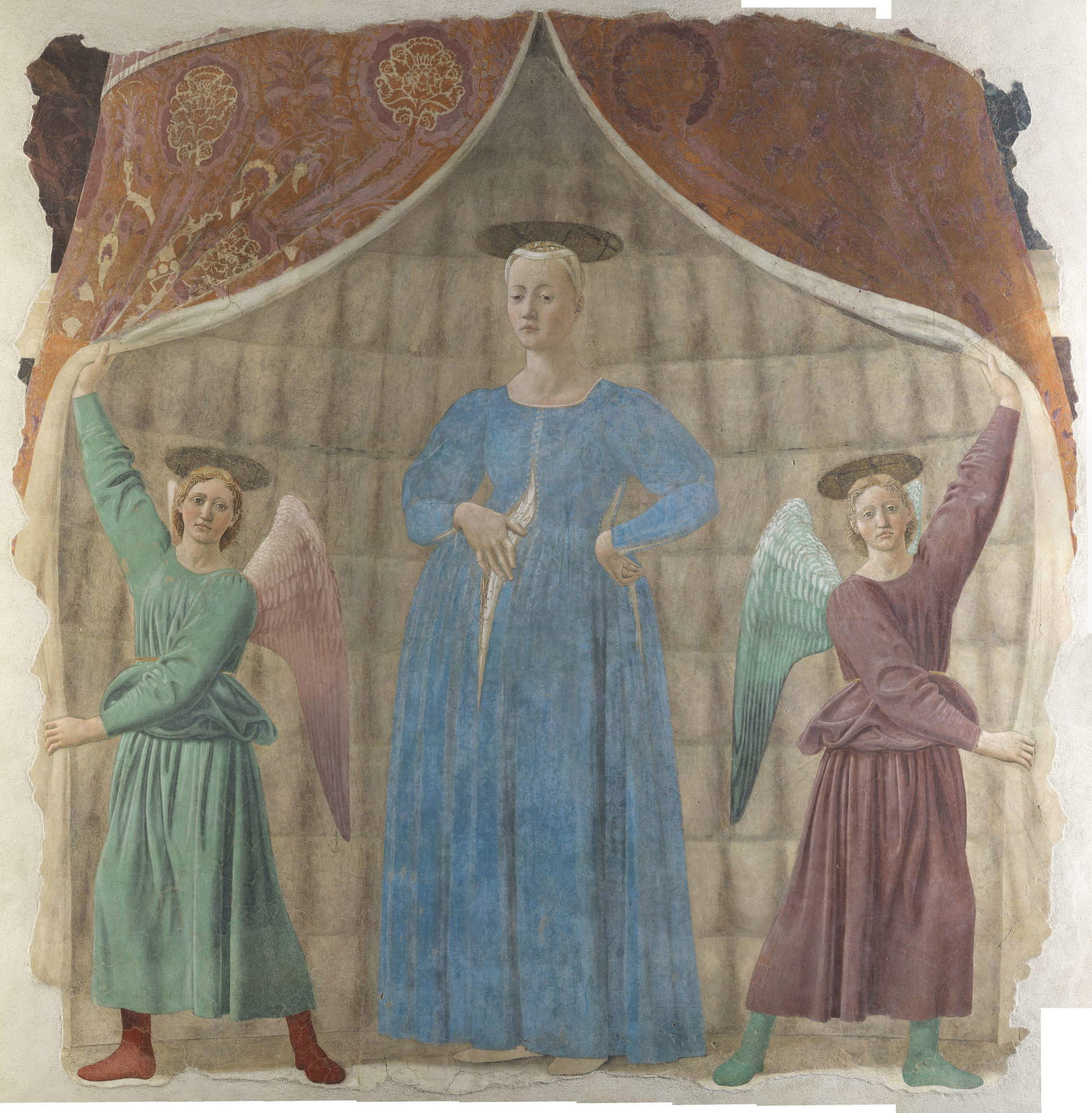
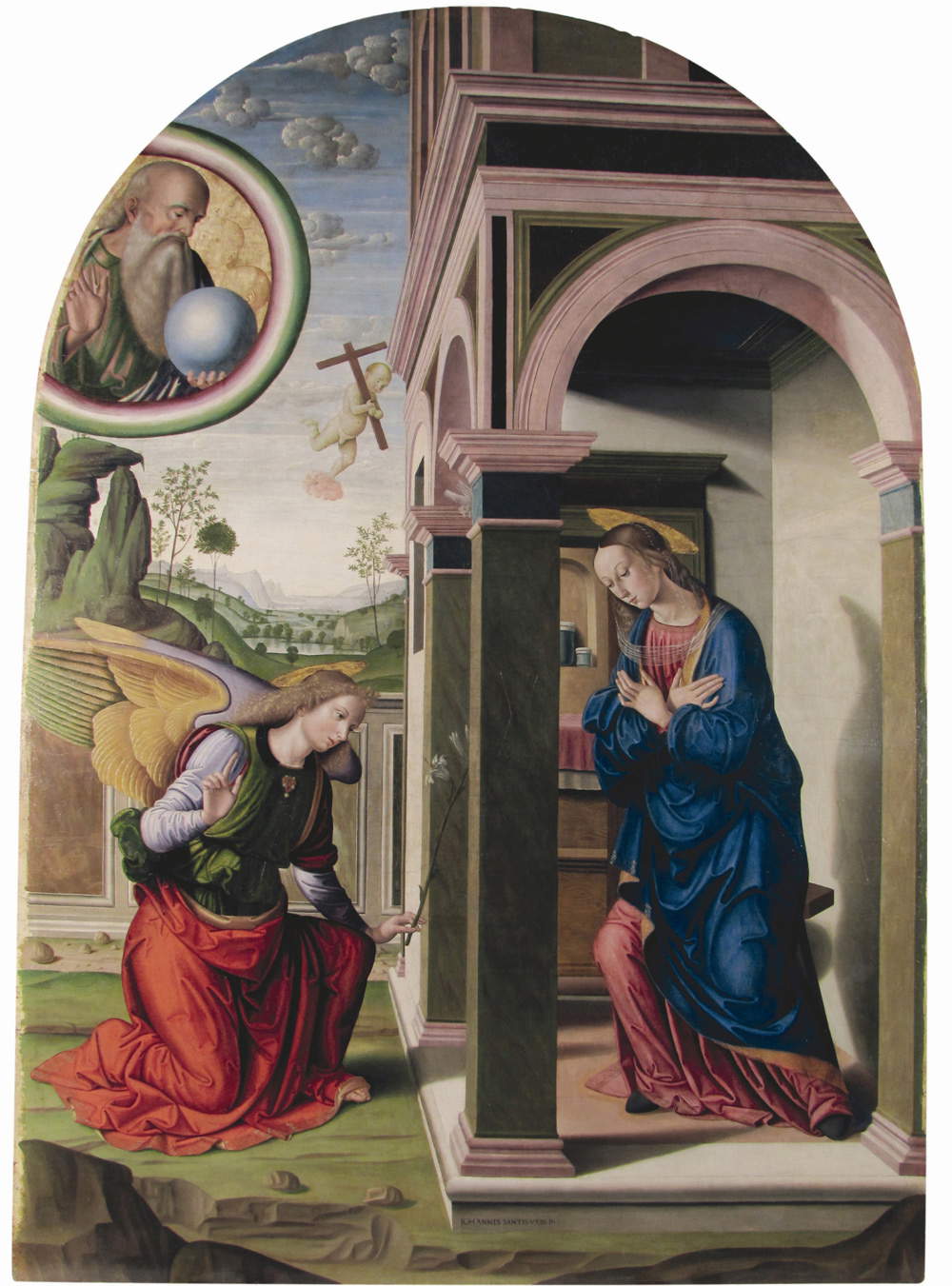
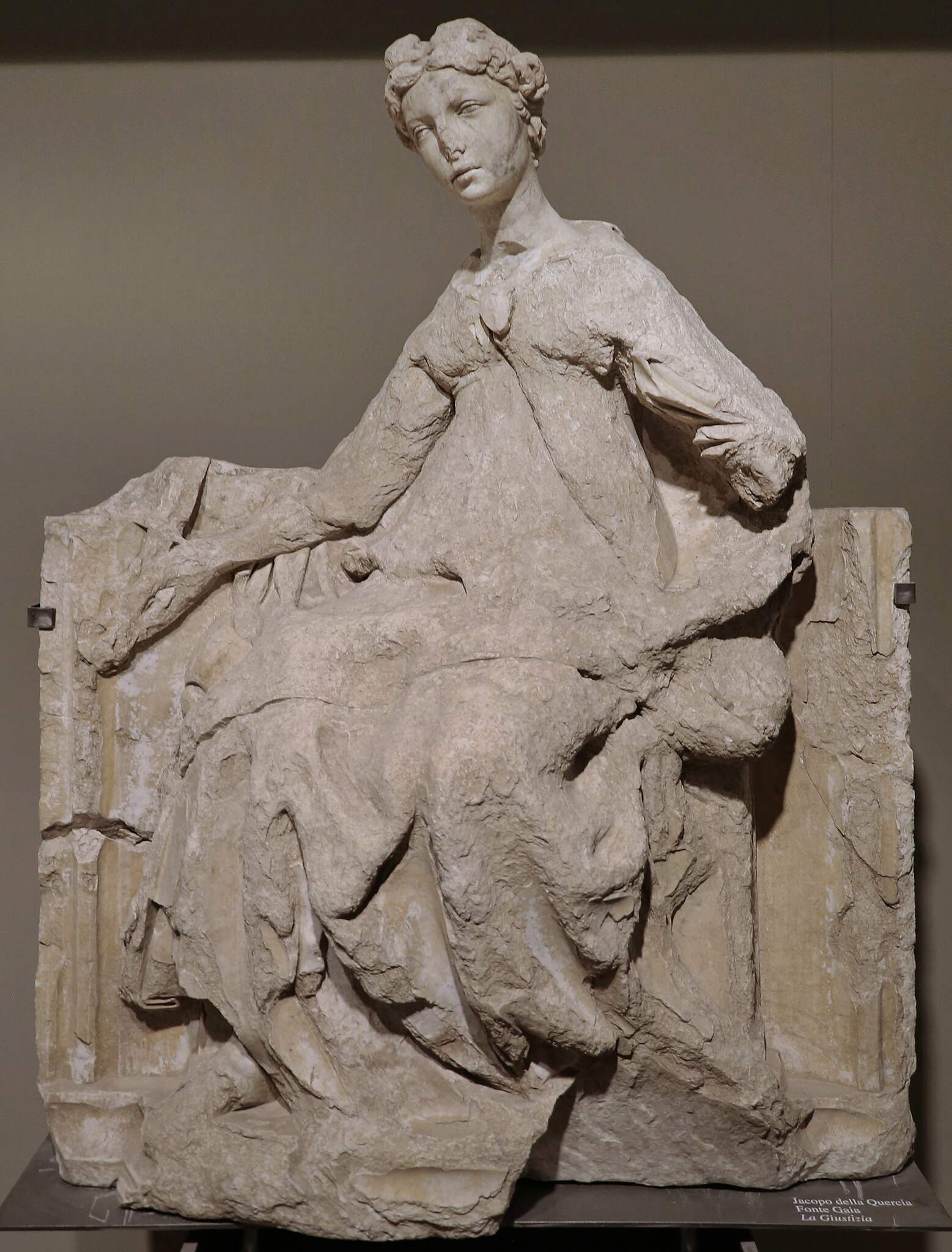
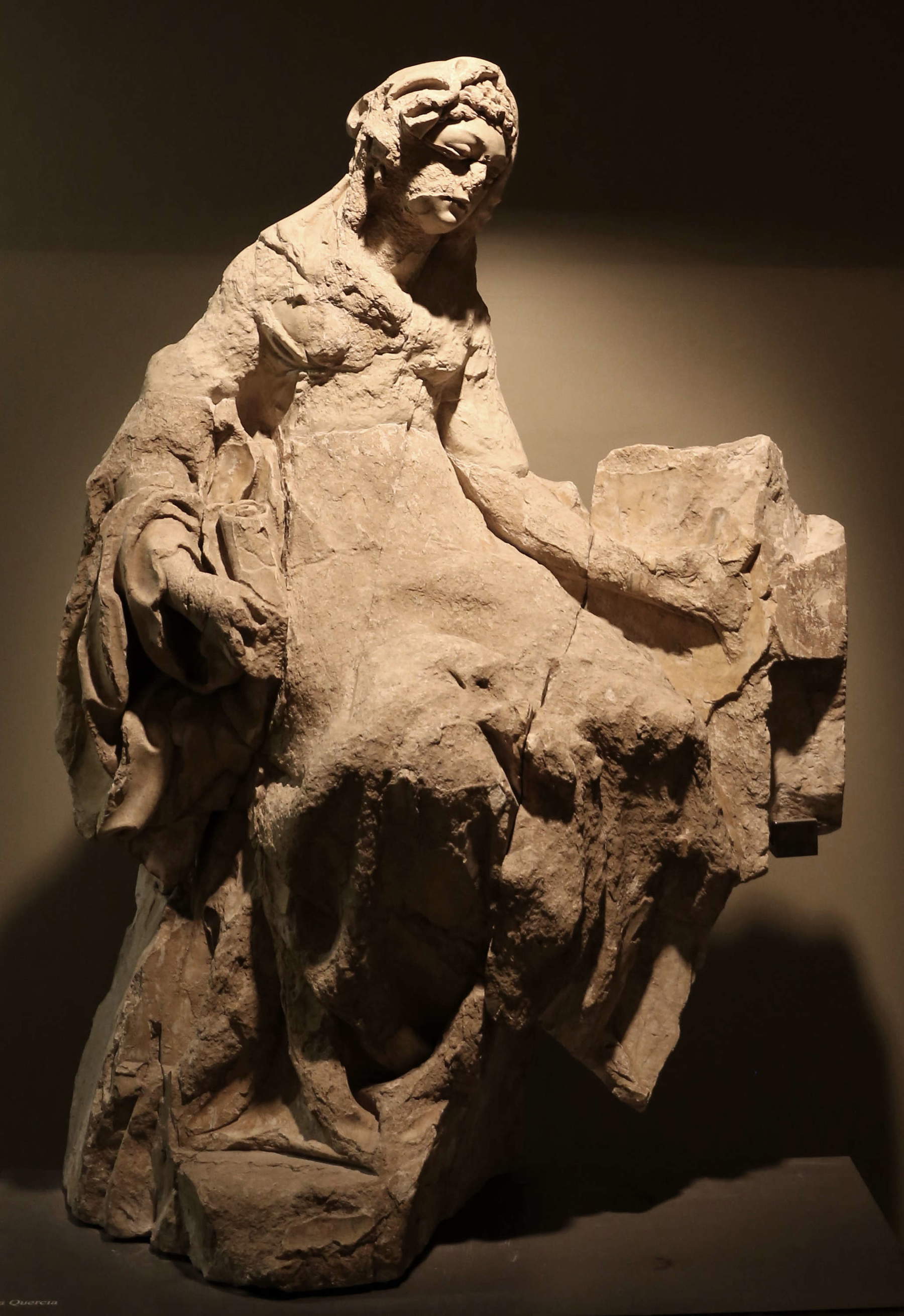
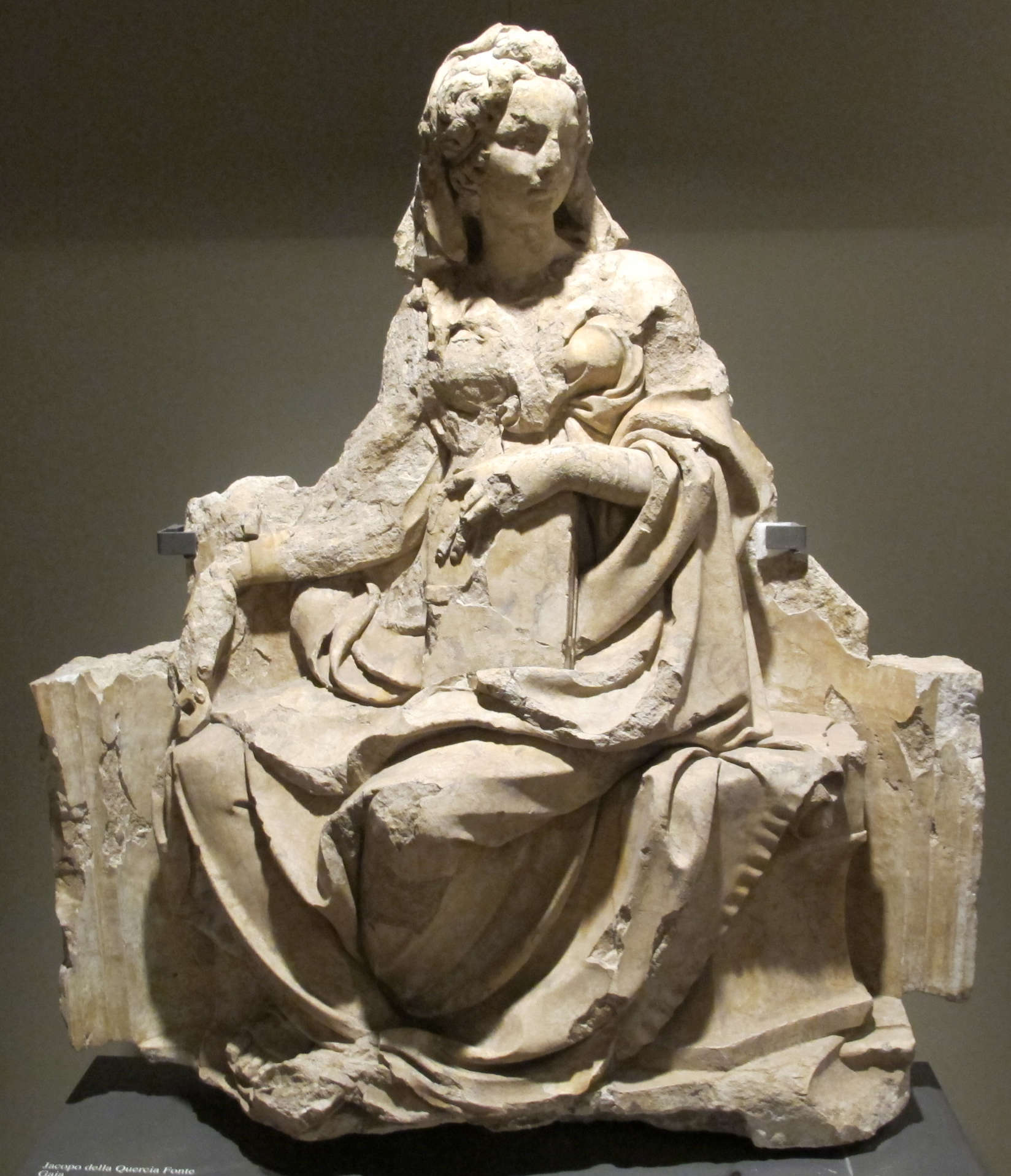
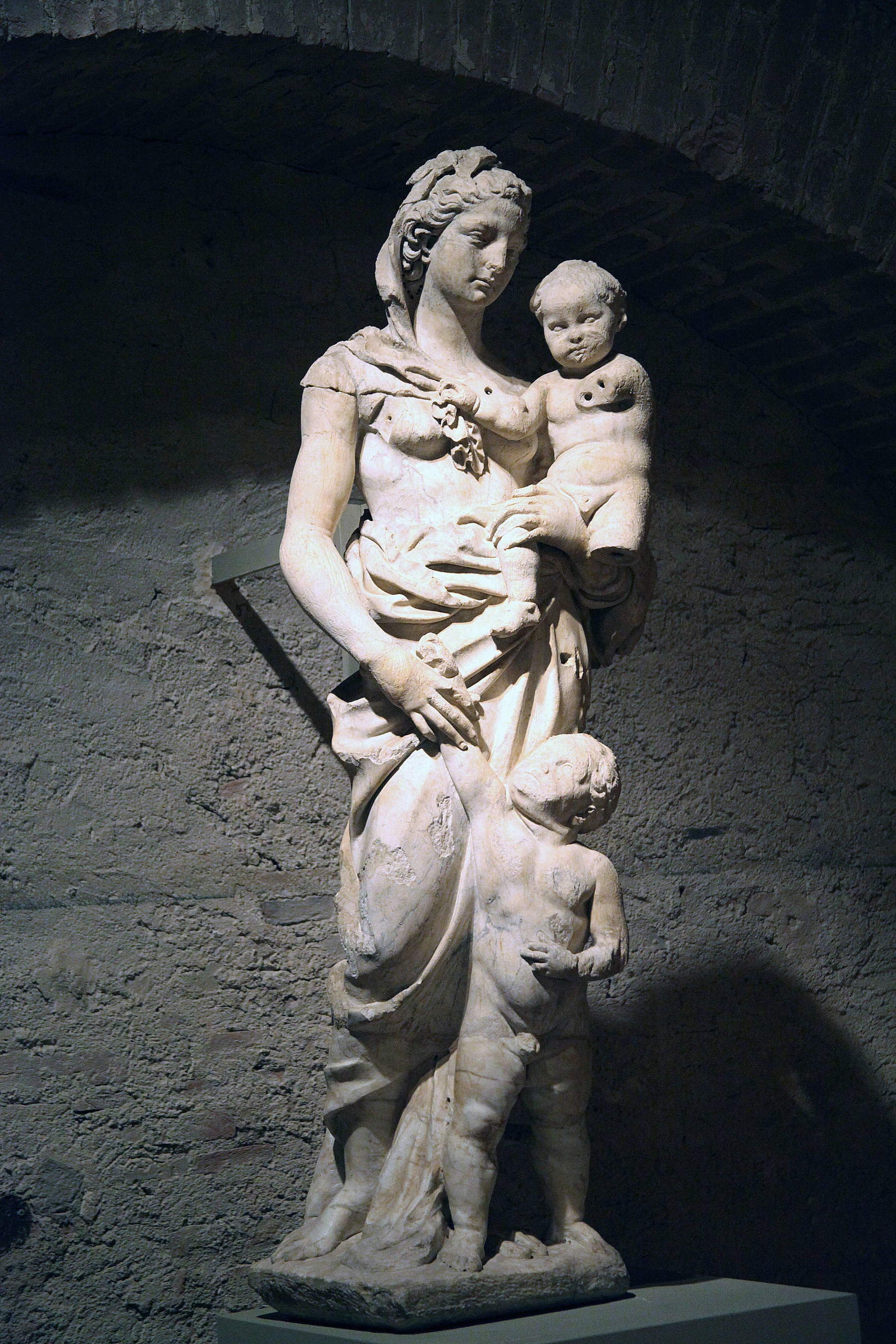
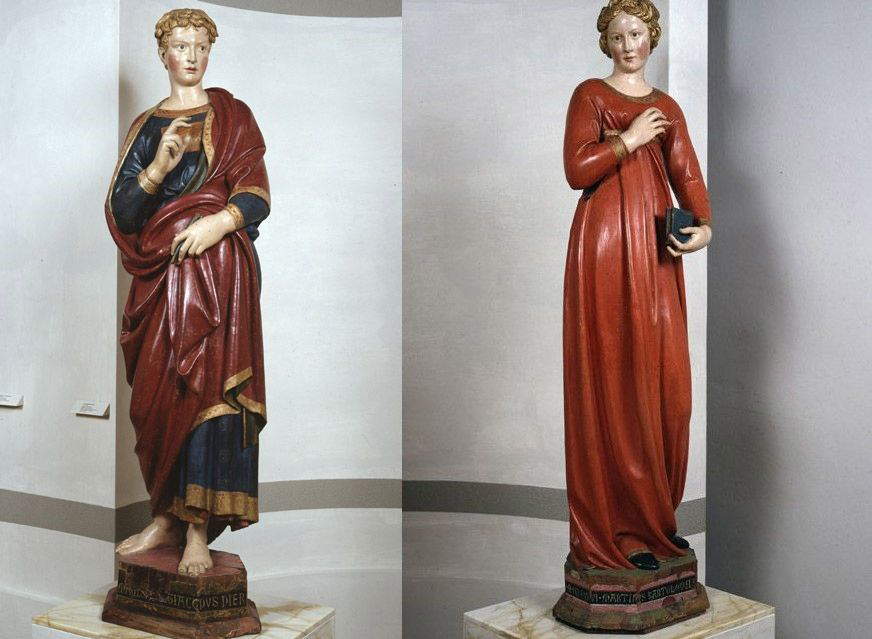
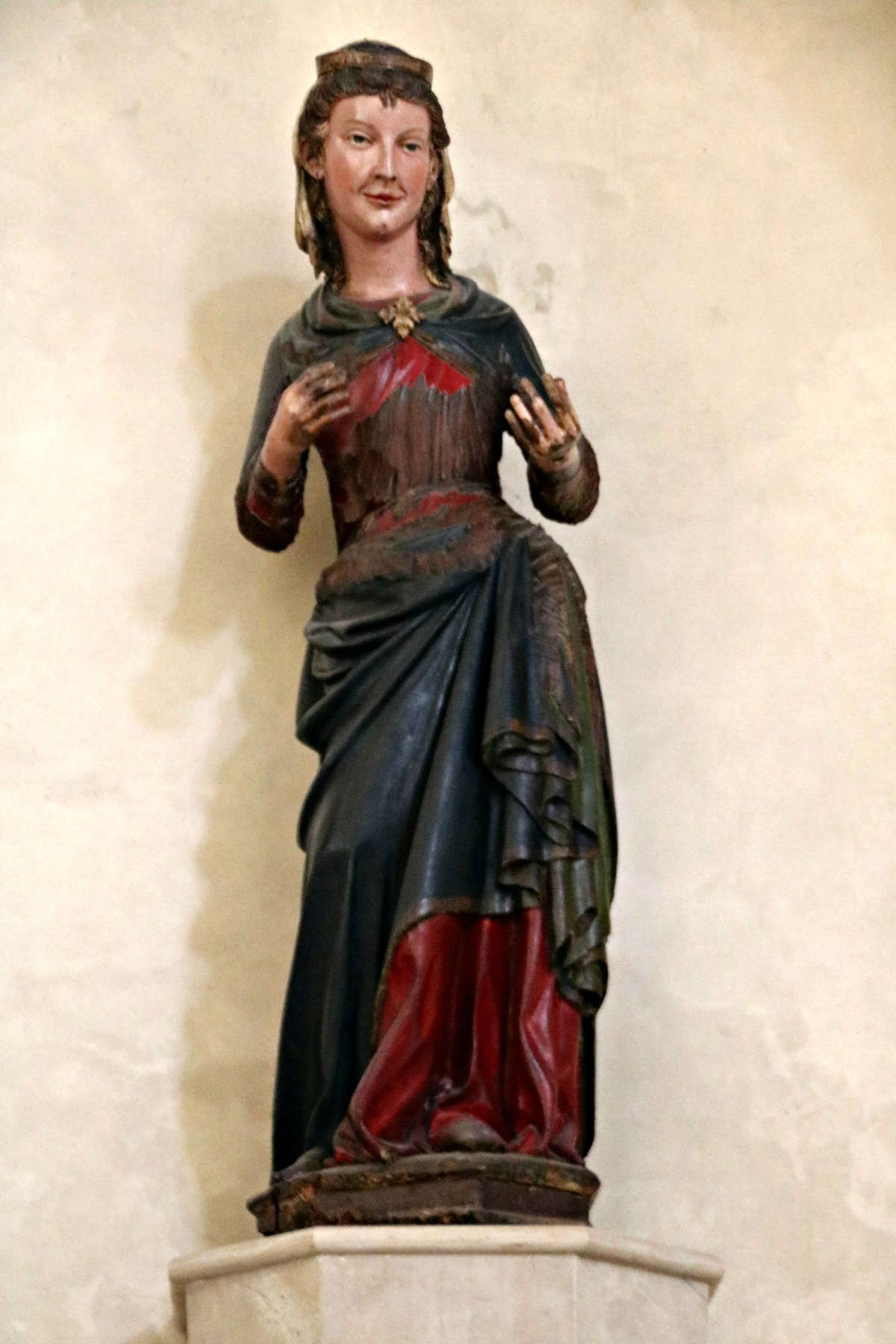
Alessandra Giannotti, noting the minor inconsistencies between the two figures (e.g., the Virgin’s hand not resting on her son’s back, the latter’s feet “too floaty” and not finding “a firm reference in the mother’s mantle”) revived the hypothesis of a separate genesis of the two figures: “we could [...] imagine, even in the face of a quercesque custom disregarded here, according to which mother and child are as a rule carved from a single plastic mass, whether wood, terracotta or marble, and always extraordinarily tight in an enveloping and naturalistic embrace, that the Sienese sculptor found himself here complying with precise cultic demands imposed on him by the company of Misericordia. In response to the latter, the two physically reunited protagonists in an embrace could, when necessary, Christmas or particular holidays, also be disjointed without the risk of impairing their usability.” This is what happened, the scholar exemplifies, with the Madonna and Child preserved in nearby Lucignano and sculpted by Mariano d’Agnolo Romanelli: a sculpture where the figure of the blessing baby Jesus could be removed without difficulty (so much so that it was even stolen).
Perhaps the Compagnia della Misericordia also wanted a sculpture that would be as versatile as possible, one that could be broken down and reassembled as needed, perhaps, Giannotti suggests, even with the use of a fabric cushion on which to rest the baby Jesus. Faced with the few certainties about the use of this work in ancient times, we are nonetheless certain to see in this sculpture one of the most intense works dotting the territory of the Valtiberina, one of the pinnacles of wooden statuary of the Tuscan Renaissance, as well as a sublime product of the hand of Jacopo della Quercia, so much so that at least a couple of replicas are known, of lesser quality, one preserved in a private collection in Milan and the other passed in 1965 on the antiquarian market in Rome. A work of a beauty comparable only to the best sculptures by the Sienese artist.
Warning: the translation into English of the original Italian article was created using automatic tools. We undertake to review all articles, but we do not guarantee the total absence of inaccuracies in the translation due to the program. You can find the original by clicking on the ITA button. If you find any mistake,please contact us.




























